Trade and Exchange in New Amsterdam
MUSEUM OF THE CITY OF NEW YORK
Maeve Kane | she/her
@MaeveKane
MKANE2@ALBANY.EDU
MAEVEKANE.NET/MCNY
OUTLINE
- social and political background
- reading images
- reading objects
- reading maps
INDIGENOUS BACKGROUND
- Indigenous preferable to Indian, specific nation best
- "settler" is anyone not Indigenous
- "race" emerged in the 18th century - many different Indigenous nations
- Lenape, Munsee, and others farmed AND moved seasonally
- land acknowledgements and Indigenous Peoples' Day are first steps, not end goals
- Indigenous nations and people are still here
DUTCH BACKGROUND
- private commercial venture of the Dutch West India Company
- governed by appointed director and council
- large investors paid for the right to buy land from Indigenous nations but had to negotiate for it; individual settlers rented from large investors
- less than 1000 Europeans in Manhattan in 1650
- approx 200 free and enslaved African people
TRADE
- Indigenous trade networks spanned Mexico, California, and Canada before contact
- Dutch manufactured items traded for Indigenous corn and animal pelts
- Dutch reliant on Indigenous people for food and profit
- trade was mutually beneficial
- Indigenous trade for cloth, pots, and knives saved labor, NOT because of technological superiority
Reading images
- Who made this?
- Who is the assumed audience?
- Where did they get their information?
- What argument is made?
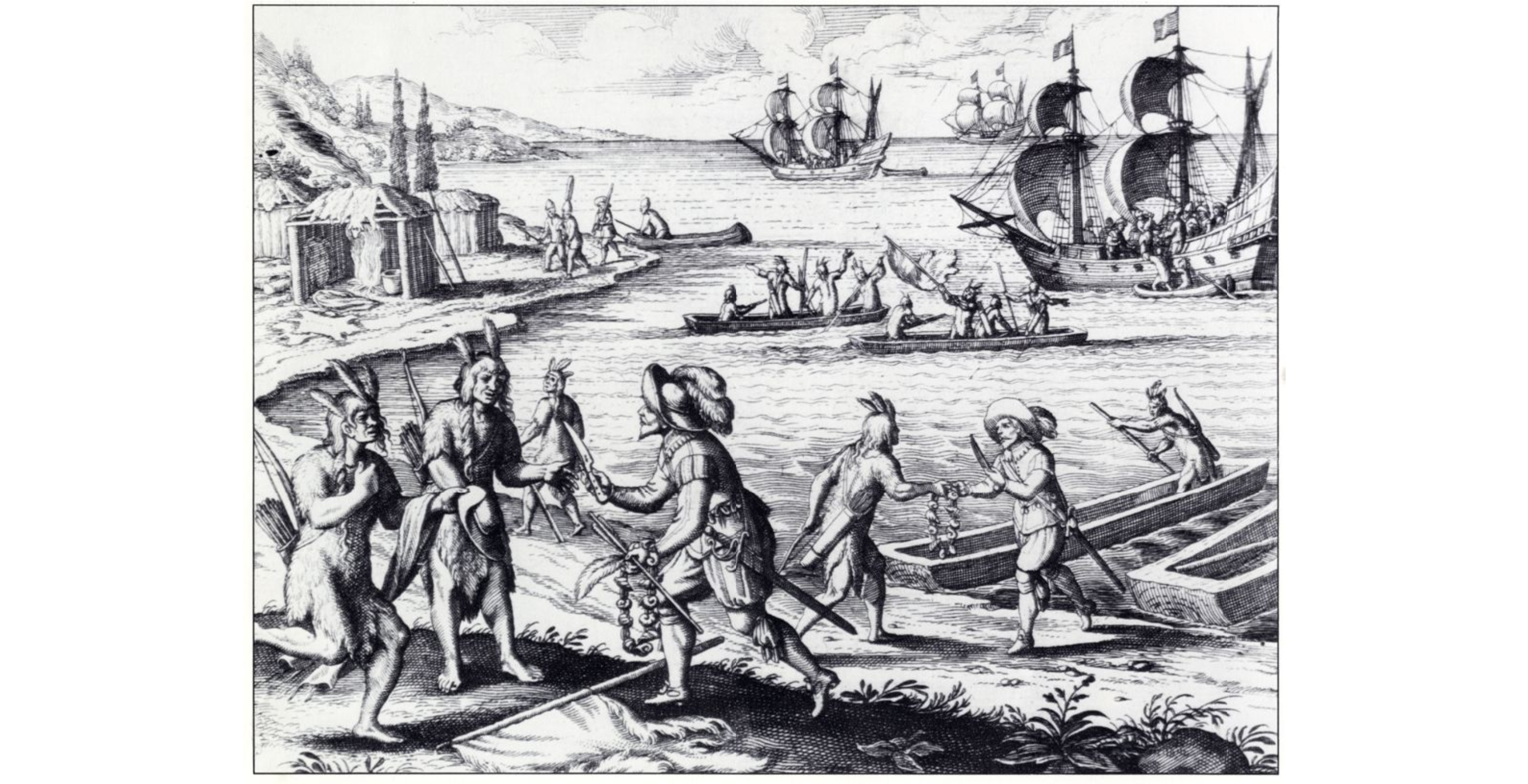 "John Guy's Encounter with the Beothuks, 1612," Mattheus Merian, 1628 https://collections.mun.ca/digital/collection/cns_images/id/35/
"John Guy's Encounter with the Beothuks, 1612," Mattheus Merian, 1628 https://collections.mun.ca/digital/collection/cns_images/id/35/
Reading objects
- Who made this?
- Who is the assumed audience?
- How was this used and who was it used by?
- What did it convey about the wearer or user?
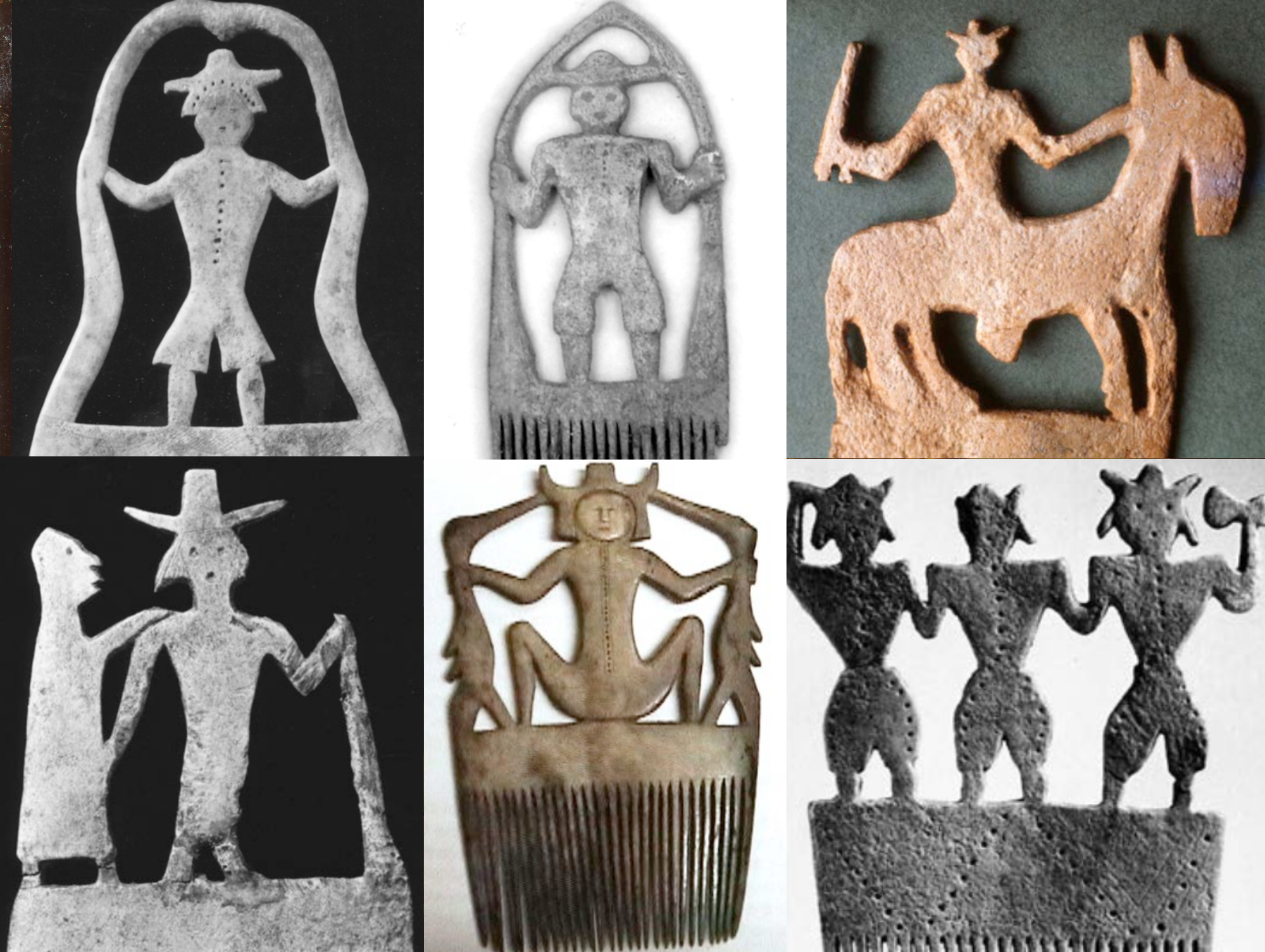 17th century Haudenosaunee combs. "Antler Hair Combs," Deyohahá:ge:- Indigenous Knowledge Centre
17th century Haudenosaunee combs. "Antler Hair Combs," Deyohahá:ge:- Indigenous Knowledge Centre
Reading an object
- combs created for personal decoration
- visible to community
- Indigenous people unmarked, "normal," Dutch exotic but not supernatural
- Dutch marked with buttons and hatchets, objects of trade
- Dutch known as "cloth people"
Reading maps
- Who was the assumed audience?
- Why was the coast oriented that way? Where was the "reader" of this map standing?
- What was pictured? How were Indigenous communities shown?
- Who controlled this territory?
US Northeast 2022
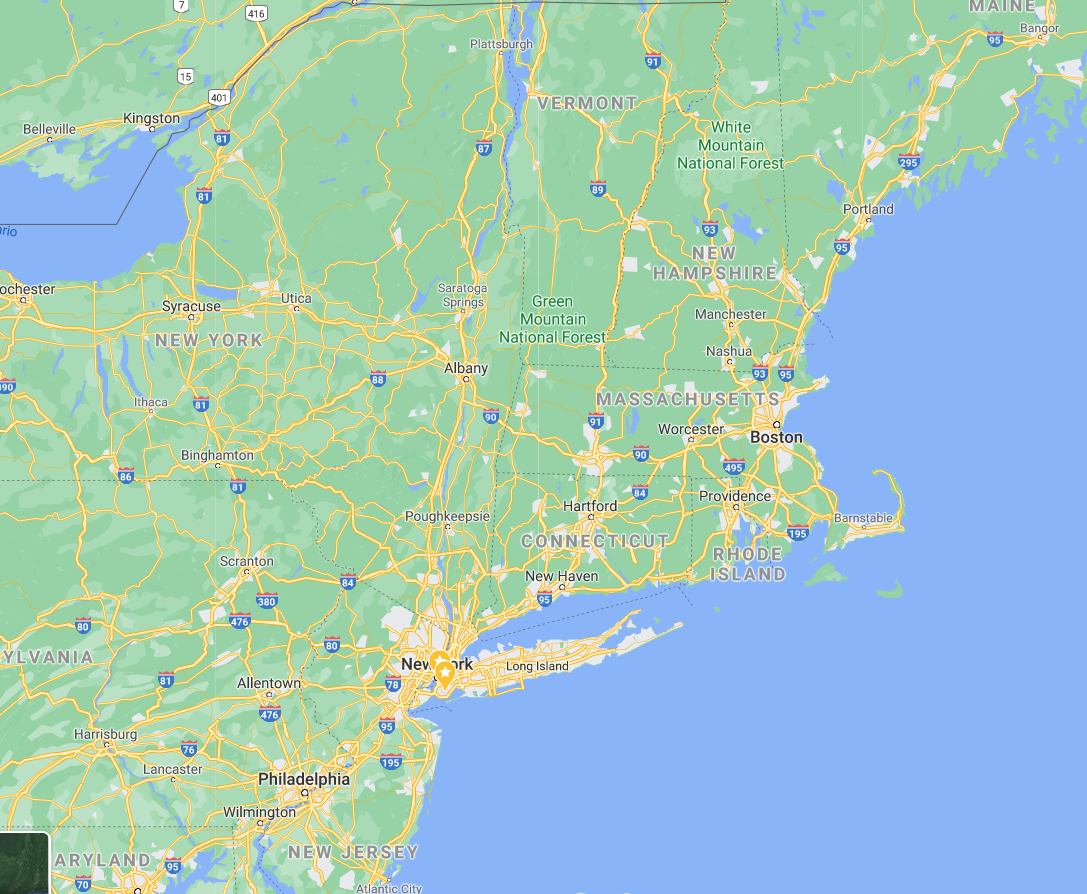
NOVA BELGICA ET ANGLIA NOVA, 1635
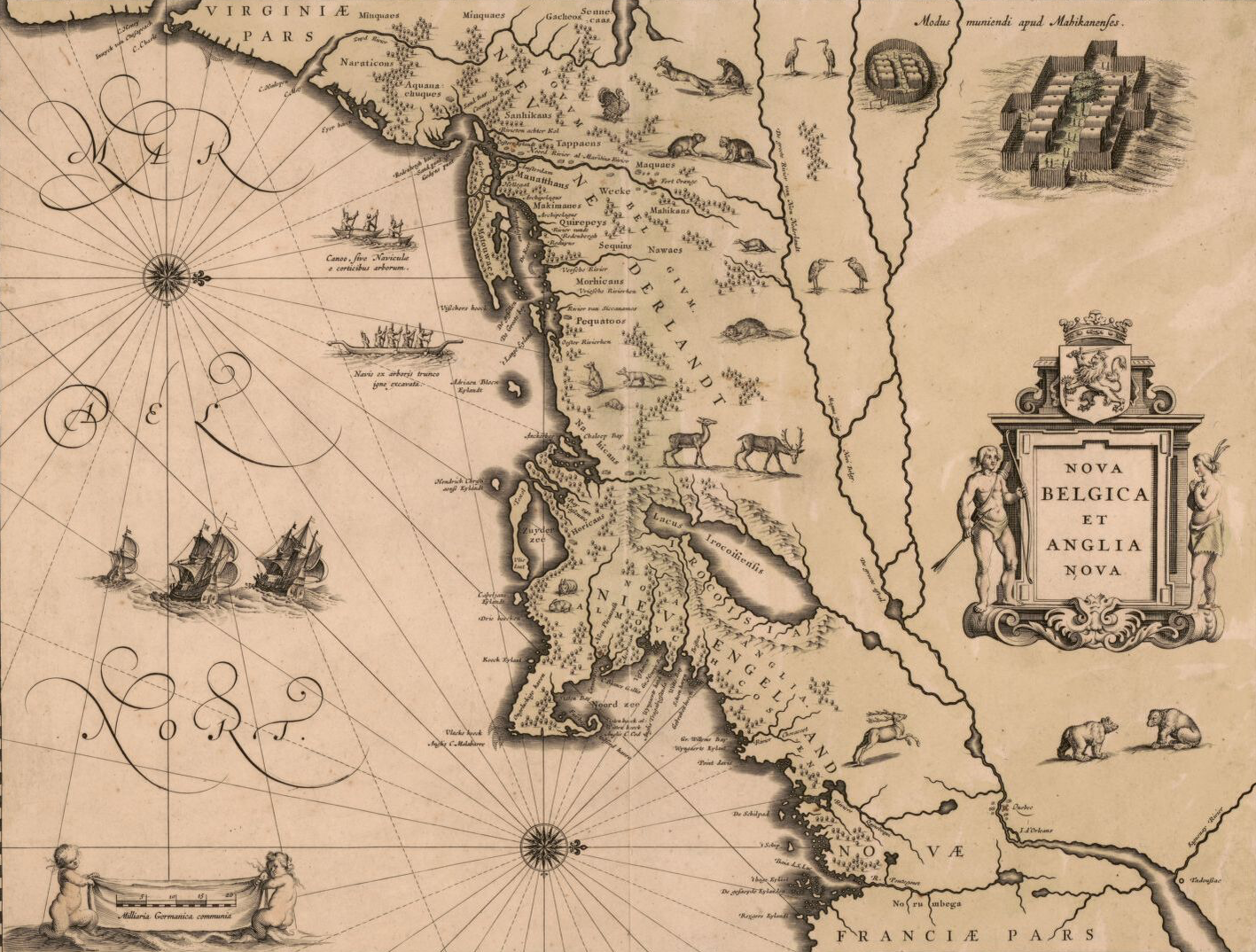
Who was the audience?
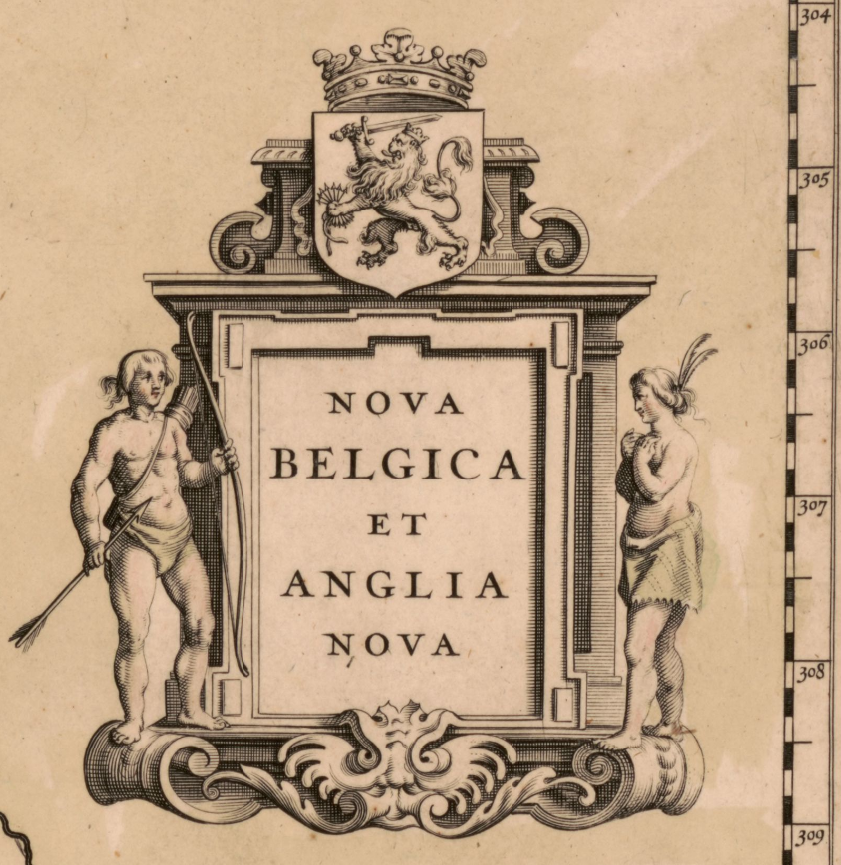
Where was the reader standing? What was labeled?
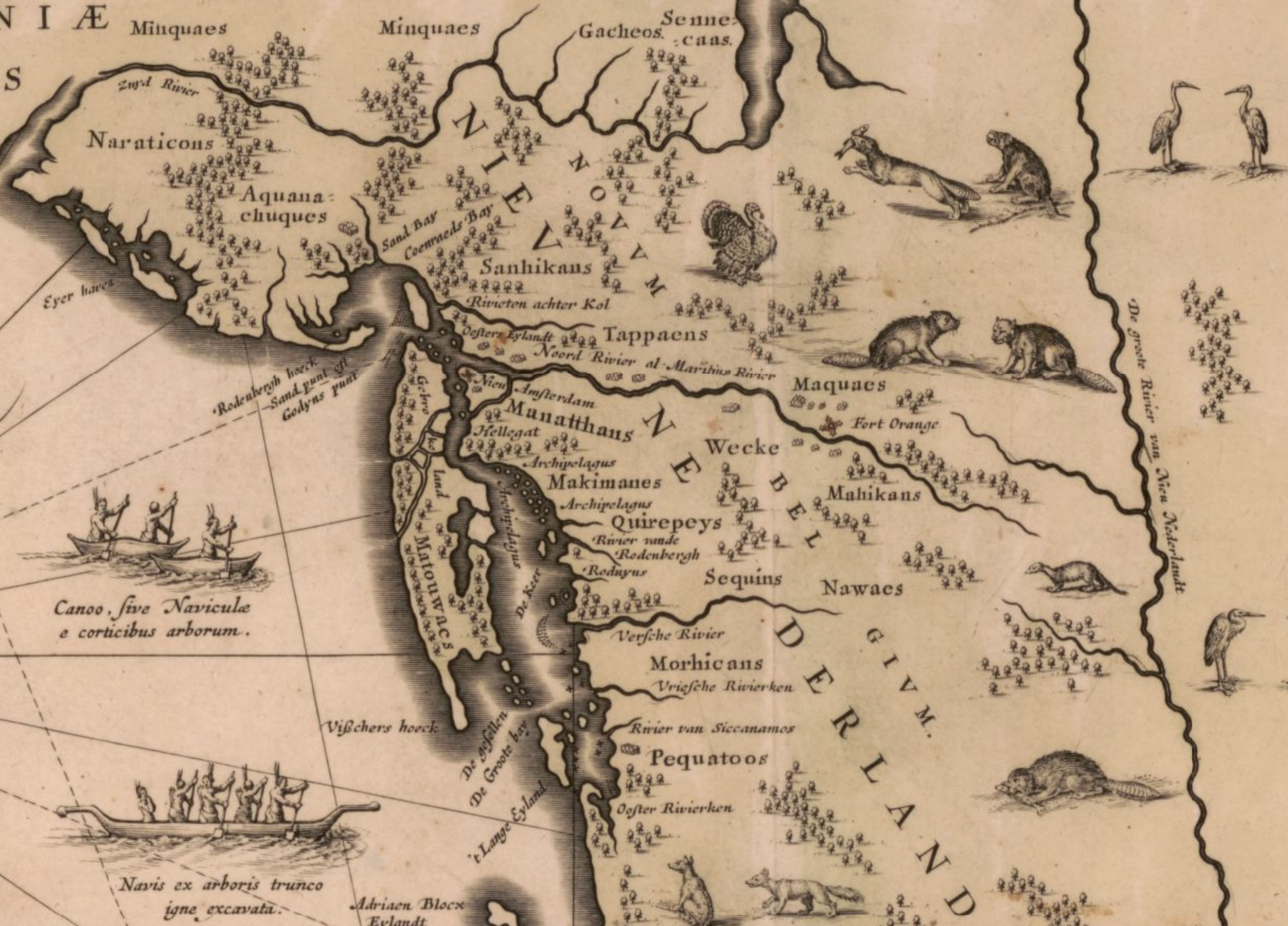
How were Indigenous communities shown?
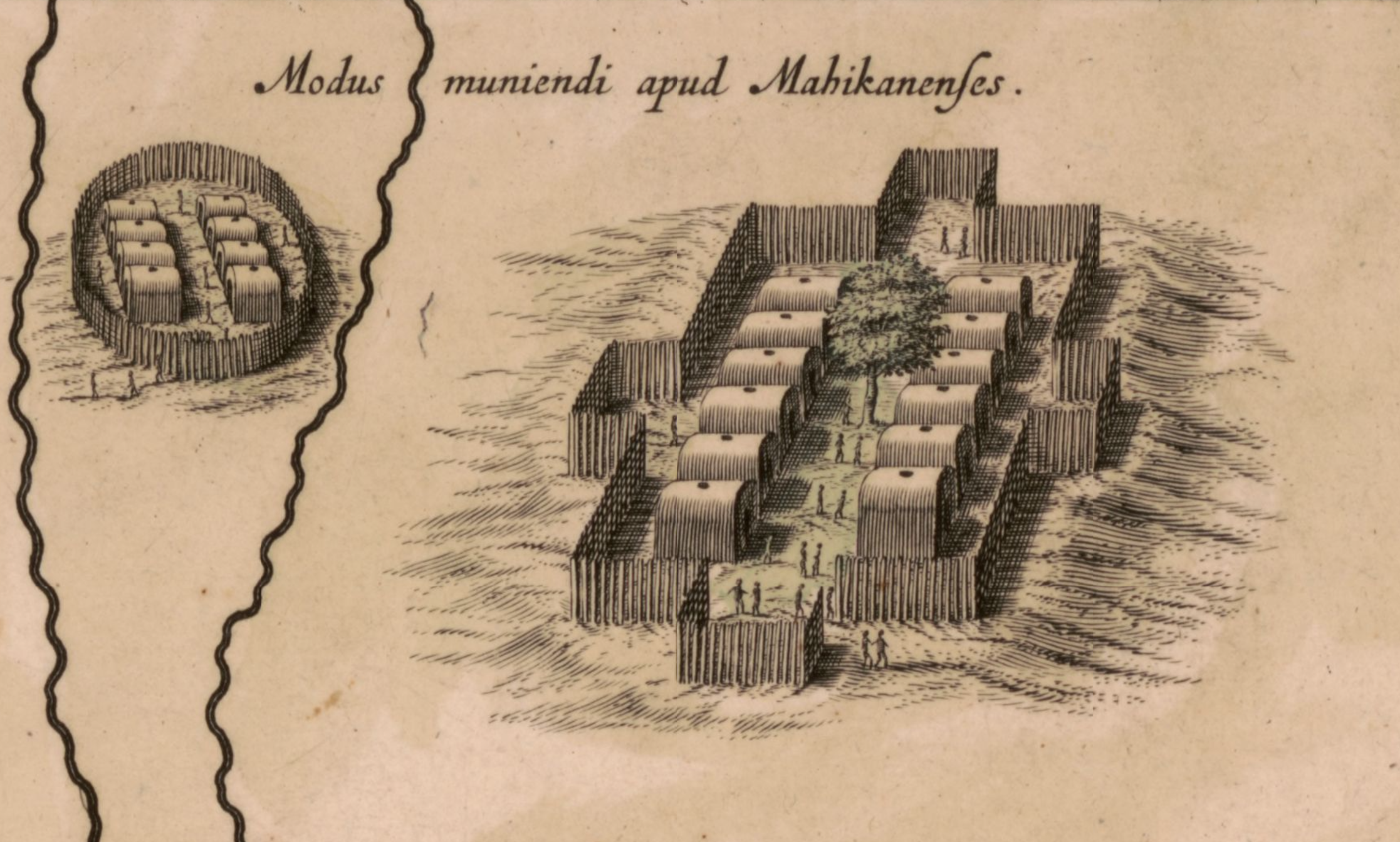
Who controlled this territory?
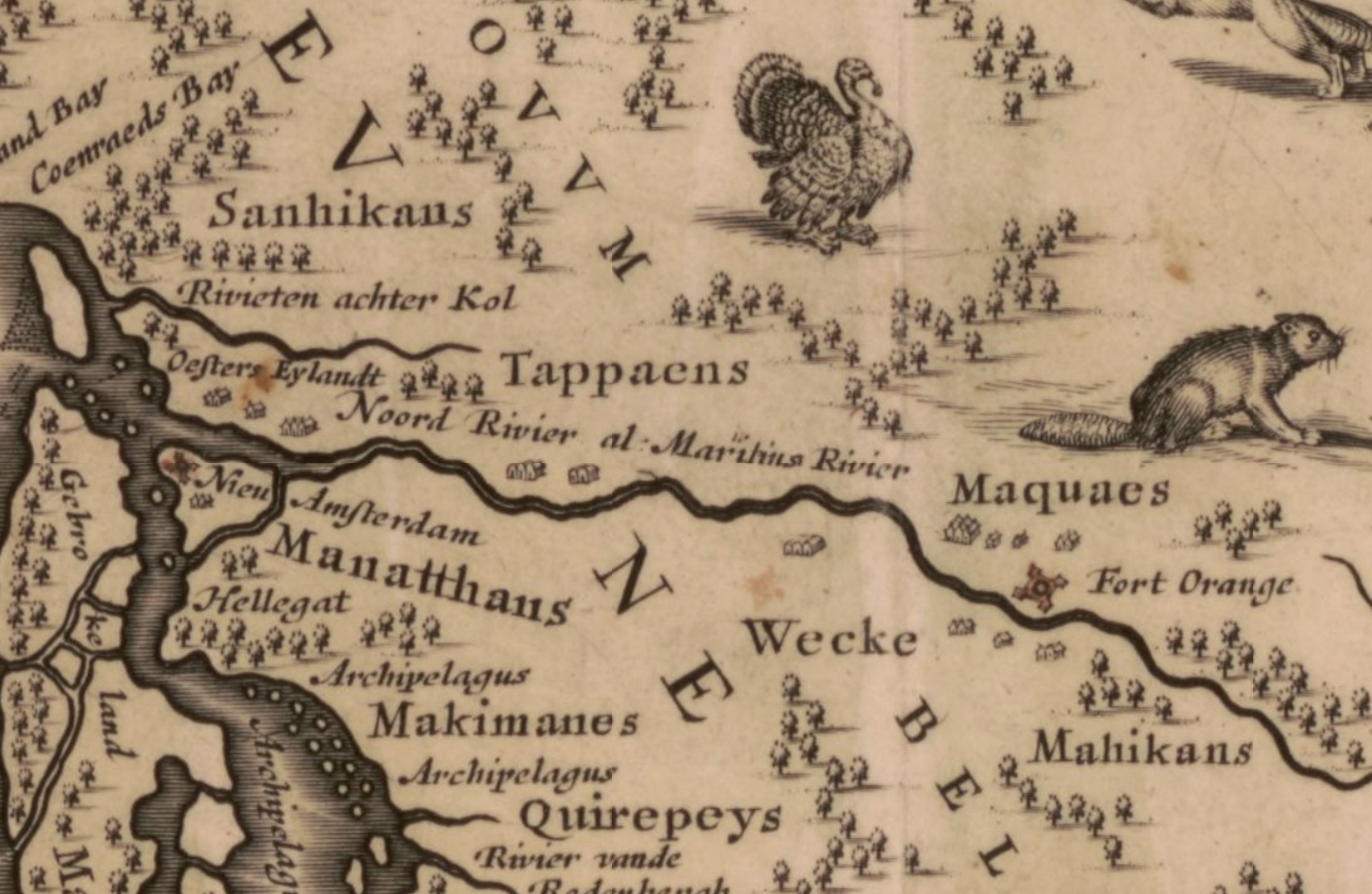
NOVA BELGICA ET ANGLIA NOVA, 1655
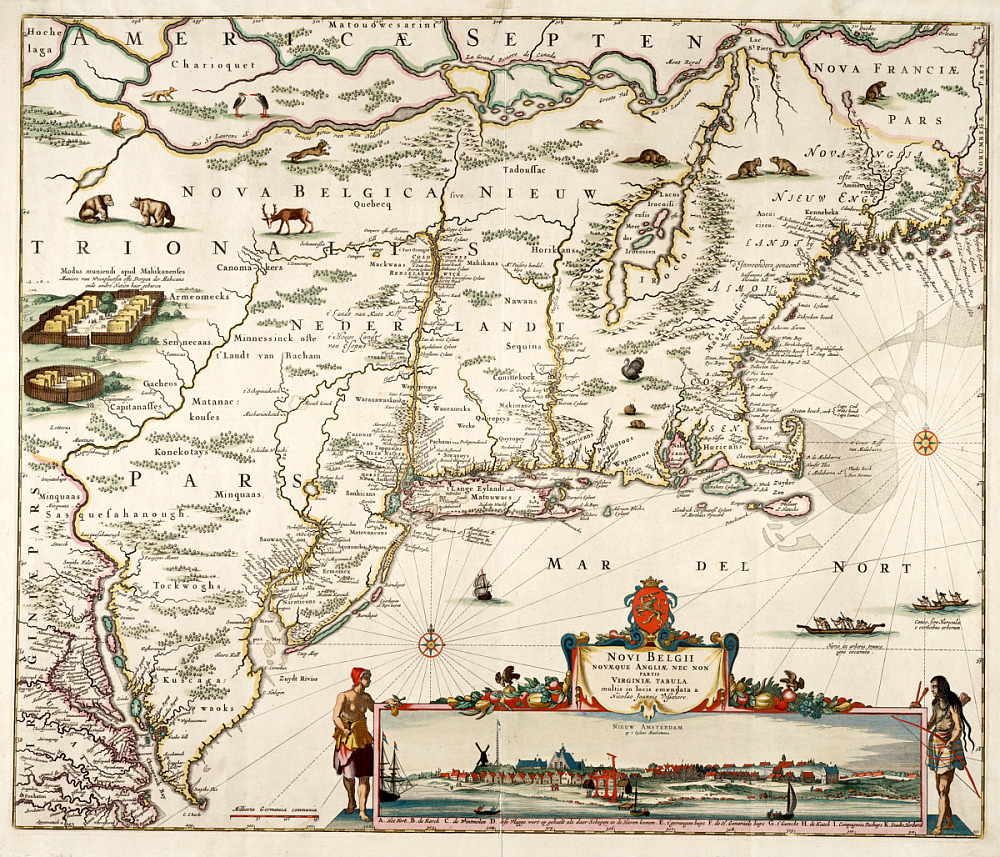
READING A MAP
- original created for navigation; printed for promotion and advertising
- main navigation via rivers; little direct knowledge of interior
- main profit concern for the colony requires Indigenous trade
- Indigenous presence and ownership acknowledged
- maps can be both descriptive and aspirational
Resources
thank you!